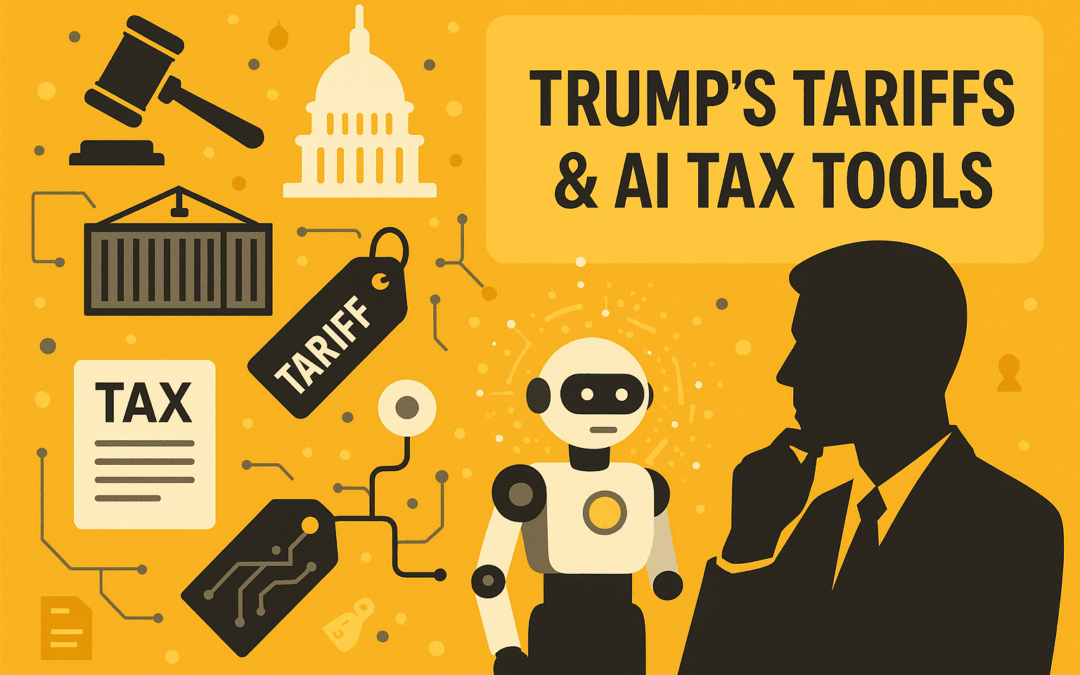The landscape of U.S. trade and tax policy is shifting fast, with Trump’s proposed tariffs poised to impact businesses, consumers, and tax professionals alike. In this blog, we break down the latest status of Trump’s tariffs, what’s coming next, and—crucially—how leveraging AI tax research, advanced AI tax planning tools, and agentic AI in tax can help tax and financial professionals confidently guide their clients through these complex changes. Discover how AI-driven solutions like Hive Tax AI can help you deliver more value in turbulent times.
The Current Status of Trump’s Proposed Tariffs
The Current Status of Trump’s Proposed Tariffs
In 2025, former President Trump has proposed sweeping tariffs on a wide array of imported goods, with policy changes rapidly evolving in Congress and the courts. Recent highlights include:
- 50% tariffs on steel and aluminum (effective June 23, 2025, for many products)
- 10% universal tariff on most imports, currently subject to legal challenges and court stays
- Proposed 50% tariffs on European Union goods (delayed to July 9, 2025, as negotiations continue)
- 25% tariffs on foreign automobiles and auto parts already in effect
See the U.S. International Trade Administration for the latest tariff schedules.
What’s next?
Watch for court rulings on the legality of universal tariffs, as well as ongoing Congressional and White House negotiations that could reshape the U.S. import landscape again this summer. (For the latest updates, see Congressional Research Service: U.S. Tariff Policy.)
How Will These Tariffs Impact the Average American?
According to economic models from the Wharton Budget Model and Yale Budget Lab, the average U.S. household could pay between $1,200 and $3,800 more per year due to increased prices on goods ranging from food and appliances to vehicles and electronics. Read the analysis and Yale Budget Lab study.
Tariffs often hit lower- and middle-income families hardest, leading to higher grocery bills, more expensive clothing and electronics, and ripple effects in employment and wage growth. For tax professionals, these changes mean clients will have new questions about deductibility, cost allocation, supply chain impacts, and potential tax-saving strategies.
How AI Tax Research and AI Tax Tools Empower Professionals
In a rapidly evolving policy landscape, AI tax research and AI tax planning tools have become essential for tax and financial professionals:
- AI Tax Research: Instantly analyze thousands of pages of new tax law, IRS guidance, and trade policies to deliver up-to-date, citation-backed answers to client questions.
- AI Tax Planning Tool: Model tariff impacts on client businesses, optimize entity structures, and uncover opportunities for savings—even as new policies roll out.
- Agentic AI in Tax: Next-generation, agentic AI workflows can proactively monitor legislation, flag client exposures, suggest tax strategies, and automate complex scenario analysis in real time.
Recommended resource:
Try Hive Tax AI’s agentic platform for scenario-based tax planning and research. Join hundreds of professionals who use AI to gain a competitive edge.
Other leading AI tools for tax professionals include Thomson Reuters ONESOURCE, Wolters Kluwer CCH Axcess, and Bloomberg Tax.
The Role of AI in Tax Planning During Trade Policy Shifts
When tariffs or trade rules change, agentic AI in tax can:
- Alert you to new IRS guidance or legislative changes that affect your clients
- Analyze the downstream impact of tariffs on business cost structures and deductions
- Generate tailored client communications on how to adapt to new policies
- Recommend year-round tax planning strategies to mitigate cost increases
By leveraging AI tax research and tax planning tools, professionals can deliver higher-value, proactive advice—and free up time for more strategic client work.
Conclusion & CTA
The bottom line: Trump’s proposed tariffs introduce both uncertainty and opportunity for tax professionals. Staying ahead means embracing the latest AI tax research, AI tax tools, and agentic AI workflows to empower your advisory services. Ready to future-proof your practice and deliver smarter advice—no matter what policy changes come next?
Try our AI tax planning tool today or book a free demo and see how you can serve your clients with confidence, accuracy, and speed.

